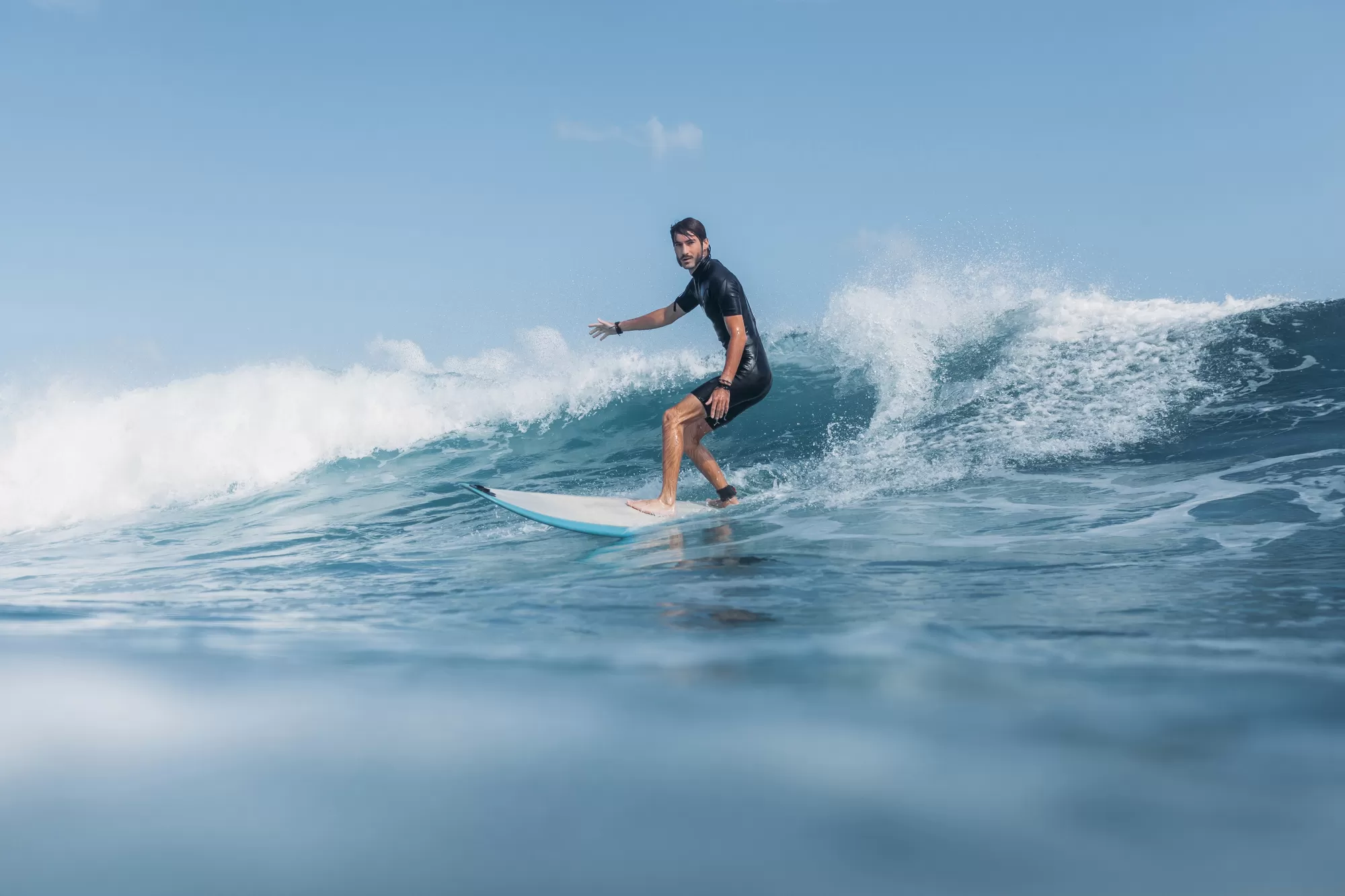Surfing is a dynamic water sport where participants ride on ocean waves using a surfboard, balancing and maneuvering as the wave propels them toward the shore. It combines physical strength, balance, timing, and a deep connection with the ocean. Surfers often paddle out beyond the break zone, wait for a suitable wave, and then catch it at the right moment to ride its energy.
